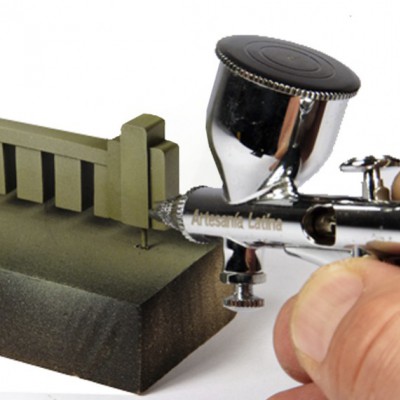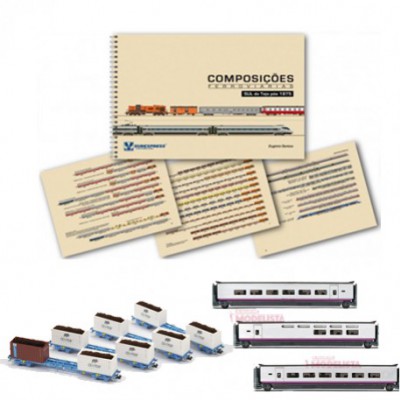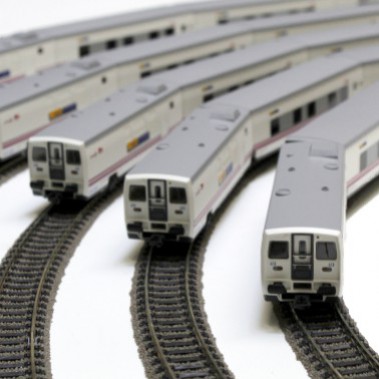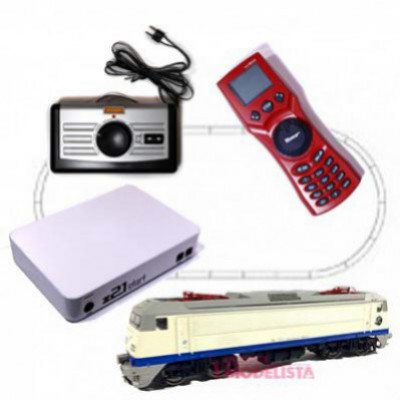Previous considerations.
Every railway modeling enthusiasts, even those who have never been able to enjoy their own model, have thought, designed or “dreamed” of different circuits and track paths, with end or passing stations, with industrial areas or open landscapes. However, before starting with the construction of a model, we must be clear about what we are looking for and what type of railway operation we want to carry out.

The design of a scale railroad route should not be oblivious to some elementary concepts of railway operation. It is not about becoming experts on the railway, but understanding its operation to be able to translate it into a scaled reality.
The anodyne circuits, without the possibility of creating a real operation of the model, usually end up with boring modellers and trains in showcases, there it comes the importance of spending all the necessary time to the design of the path before starting the works o material purchases. The temptation to install tracks and enjoy trains as soon as possible is huge, but the quick decisions play against us.
We must realize that the “playability” of a model depends largely on the circulation being, in addition to fluid, consistent. The railroad is a way of transport that travels from one point to another for a specific purpose: transporting passengers or merchandise. It does it in a linear way, passing through intermediate stations in its route, until reaching its destination. It does not spin, nor does it constantly go through the same place.
There are almost as many types of circuits as modellers. The more “purist” current defends paths that reproduce the essence of the real railway lines, with circuits on one level, making a rational use of the available space and looking for a purely railway operation. Other fans are inclined to take advantage of the entire surface they have, however small, with paths full of tracks at different levels (what in the slang is known as “roller coaster”). Between both, there are many intermediate ways.
In summary, it is about creating a circuit that allows us to enjoy its design, construction and the circulation of our trains. According to our own criteria, but trying to avoid some bad decisions that will break our initial enthusiasm, and keeping in mind that the “playability” of a model is probably the most important point when facing its design.

The available space.
This will be the biggest limiting factor that most modellers face when designing our model. There are few fans who can have a room exclusively dedicated to this hobby, and fortunate those who have spaces larger than a few square meters.
As we saw in the previous post, the available space is decisive when deciding which scale we will use. We must remember that for the same path, the H0 scale (1:87) will take an area 4 times larger than an N scale (1: 160). Once we have clear the chosen scale, we will have to draw a circuit according to the space we can count on.
What is the minimum space for a circuit in H0? (or in N) – This is a very frequent question, but it does not have a specific answer. If we stick to the commercial circuits proposed by the manufacturers of starter sets, we could have the wrong idea that 150 x 80 cm is enough to make a H0 scale model. A 1:87 scale model railroad is never going to enter this surface and the best idea, in that case, if we want to do more than just a simple oval for trains to go around, it would be to go to a smaller scale.
Usually, the space available for our model will be conditioned previously by factors from out of the hobby, being a certain surface. Knowing this data in advance, there would be two ways to deal with the design of the circuit:
1. The scale rules – If we are very clear that we want to wirk witho a specific scale, then we will have to adapt our space to this scale. If the space is small and the scale is large, the circuit will be very conditioned.
2. The circuit rules – If, on the contrary, we are clear about the circuit we want to reproduce, we would have to carry out the design of the circuit at different scales andthen we will have to decide which one best suits our space.
The curves and the minimum radius.
When designing a miniature railway path we must assume a complementary reduction to the one marked strictly by the scale, since reproducing it exactly would be infeasible for reasons of space. It is exactly in the curves where this fact is most evident.
Establishing the minimum radius in the curves of our circuit is an important decision and is determined by two aspects:
1. Mechanical criteria – The technical limitation of the rolling material itself.
2. Aesthetic criteria – The search for greater realism in the curve.

Making paths with curves too tight, forced by a small space or by the desire to put all the tracks that we can in the circuit, is a source of problems of very difficult later solution (mechanical criteria). In addition to being a cause of derailment, an excessively closed radius cause a very unsightly and unreal effect in the passage of the compositions through the curves (aesthetic criteria).
The choice of the minimum radius will undoubtedly be conditioned by the scale chosen (and the available space), but also by the type of material that we want to circulate through our model. Limiting to a exploitation of short material on secondary lines is a totally feasible option, but often many modelers want to look for the limits of the path, with material less and less adapted to the initially planned concept. Being consistent with the decisions we make during the design phase is of great importance.

The NEM 111 standard determines minimum standards according to the recommended radious depending on the type of material used (in this case, wagon cars, one of the most problematic materials). Although it is common to find wagons that circulate below the marked radious, it is convenient to take this information into consideration. The following table is a summary of this standard for scales N and H0.

Additionally, it is advisable to use transition curves, especially in layouts with small radii. Transition curves allow for a gradual entry and exit from a curve until reaching the minimum radius. This smoother transition reduces abruptness and improves circulation on smaller radii.
Another aspect to consider in curve design is the presence of reverse curves or “S” curves, as these points put maximum stress on the rolling stock’s tracking ability. In such cases, it is recommended to use larger radii than elsewhere on the layout or to intersperse small sections with transition curves or straight tracks.
In conclusion, it is best to use the widest radii allowed by our layout design. Small radii may lead to rolling issues, especially with critical rolling stock such as bogie wagons, railcars, or locomotives with multiple coupled axles. Larger radii allow for smoother and more realistic operations, as well as the use of shorter couplings.
Maximum gradient:
Similar to real railways, the maximum gradient is another critical aspect of our layouts. While changes in elevation create visually appealing effects and enhance playability, they must be implemented based on predefined criteria.
Firstly, gradients are usually expressed as percentages (%) or in per mille (‰). For example, a layout that rises 5 cm over a 100 cm distance has a gradient of 5% (or 50 per mille).
A 2% gradient would be significant in real trains, but for model trains, it is generally manageable. There’s no standardized maximum gradient for model railways; it depends on the specific model, the composition being pulled, the starting speed, and its length. Motorized models typically have traction tires that significantly increase their traction capacity. As a general rule, model railway gradients should not exceed 3%, although keeping gradients below 2% is ideal if space allows.

Abrupt changes in gradient are also problematic in any layout as they can cause derailments and accidental uncoupling of rolling stock. We should always ensure a gradual transition from a flat area to our maximum gradient.
Curves on ascending gradients require our trains to exert greater traction due to increased friction against the rails. It is advisable to reduce our maximum gradient at these points on the layout, especially in tighter curves.
In addition to technical considerations, aesthetics are important. Excessive gradients tend to make our layouts appear unrealistic and can detract from their visual appeal.


















